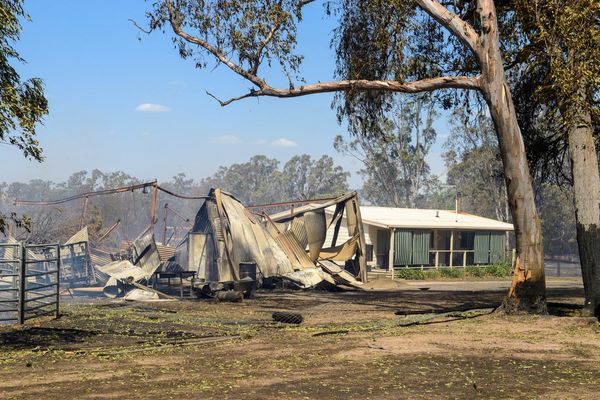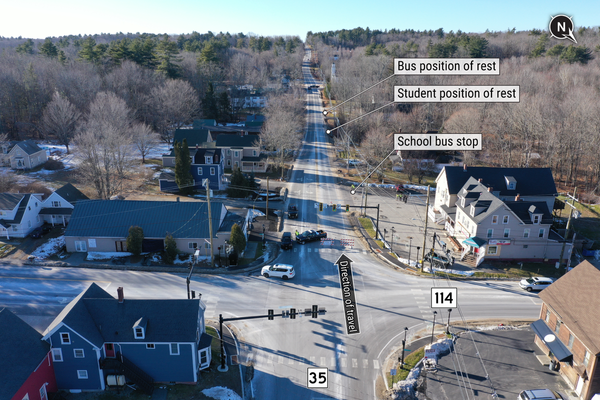The UK has experienced scorching heat like it never has before, and it is causing all sorts of problems in a country built for cool, drizzly weather.
For the first time since records began, temperatures reached 40 degrees Celsius in the country, peaking at 40.3C at Coningsby, a small village in England's Midlands.
It is about 1.6 degrees warmer than the last hottest day recorded, 38.7C in Cambridge in July 2019.
A new record was also set in Wales on Monday when the maximum reached 37.1C, beating a previous high of 35.2C, while Scotland topped its previous hottest temperature of 32.9C set in 2003, by reaching 34.8C at Charterhall on Tuesday.
Vikki Thompson, a climate scientist from the University of Bristol, told the ABC the record-setting temperatures were "not normal".
"With temperature records, we are seeing them jump up by two or three degrees at a time," she said.
Australians might be used to seeing the mercury climb this high at the peak of summer, but the usual July average maximum in London is about 23C.
In fact, records show that 100 years ago the maximum temperature reached in the UK on July 18, 1922, was just 19.9C.
"Nine of the 10 hottest days have happened in the last decade," Dr Thompson said.
"These heatwaves, they are happening more and more often, and are getting hotter and hotter. That is because of climate change."
Across Europe, the intense heatwave has seen wildfires tear through more than 19,000 hectares in south-west France, and dangerous blazes break out across Portugal, Spain and Greece.
Temperatures hit 47C in Portugal last week, a new July record for the country.
Even in London, the hot, dry, windy conditions saw fires break out around the capital on Tuesday afternoon, forcing the London Fire Brigade (LFB) to declare a major incident.
The LFB said 15 fire engines and about 100 firefighters were dealing with a fire that had already destroyed several houses in the small village of Wennington on London's eastern outskirts.
London Mayor Sadiq Khan said the fire brigade was under immense pressure and that the situation was "critical".
The unprecedented summer temperatures in the UK are compounded by infrastructure that just "isn't set up for this kind of heat," Dr Thompson said.
The country is now contemplating a future where these sorts of extreme heatwaves become commonplace.
British cities becoming 'urban heat islands'
Britain, with its centuries-old buildings and densely populated towns, faces real challenges during heatwaves.
Few residential buildings are fitted with air-conditioning, a problem many schools, aged-care homes and even some hospitals have struggled with in recent days.
Most structures are designed to keep out wind and trap heat to overcome the long, cold winters.
"I've been to Australia and you're much more adapted to heat," the UK Met Office's services director Simon Brown told the ABC.
"Houses have ceramic floors, air conditioning, and there's more air conditioning in transport systems.
"The UK is just simply not adapted. My house has got carpets and double glazing [on windows]."
The rail network in the country has also been riddled with delays and cancellations, as the infrastructure buckles under the heat.
Multiple stations on London's Underground network had to be temporarily closed early due to issues caused by the weather.
Many British cities turn into "urban heat islands" when the temperatures soar, Professor Prashant Kumar, from the Global Centre for Clean Air Research at the University of Surrey, told the ABC.
"This happens wherever you have a lot of buildings which are made of concrete and other construction materials, like brick," he said.
"Also, on the roads which are made with asphalt … you can think of all of it as a kind of radiator.
Scientists suggested this is why Heathrow airport was the first area to hit 40C in the UK on Tuesday, due to the concentration of runways, roads and concrete areas at the site.
This phenomenon of urban heat islands happens all over the world, especially in cities lacking greenery, tree cover and shade, Professor Kumar said.
Even in smaller cities and towns surrounded by grasslands and vegetation, the urbanised areas will be significantly warmer.
"This temperature difference could vary up to 10 degrees or even more depending on where you are," Professor Kumar said.
40C days could happen 'every 3 to 4 years'
With heatwaves and extreme weather events expected to increase in the coming years, the UK may need to start planning for a hotter future, experts suggest.
St Helier's hospital on the outskirts of London is one UK medical facility not thoroughly fitted with air-conditioning.
One mother gave birth there in the midst of heatwave, and relied on her partner holding a tabletop fan to her face to keep her cool, she told BBC News.
The temperature inside the wards reportedly climbed to over 32C.
"We could expect these 40 degrees days in the UK to happen every three to four years and so they'd become fairly common," Dr Thompson said.
"We will have to be just getting used to them to be able to live through them.
"Earlier this year, we saw the temperatures in India reaching around 50 degrees and that country did cope with it.
An adaption strategy will require a multi-faceted approach to make the country's cold-weather infrastructure more resilient to the heat, Professor Kumar said.
"It's not as if you just put lots of trees everywhere, that will solve the problem," he said.
"There is a need, actually, to improve the environmental conditions outside, but also improving the building conditions inside."
Nature-based solutions can make the built environments more resilient to heatwaves, rain events and flooding, while old buildings will need retrofitting, and new buildings must meet heat specifications.
This unprecedented weather should be a reminder to governments and individuals about the growing impacts of climate change, Dr Thompson said.
"Every reduction in greenhouse gases will help make a difference in the future, and even small actions by an individual can make a difference," she said.
"If everybody does it, then we there is a lot more hope for the future."







